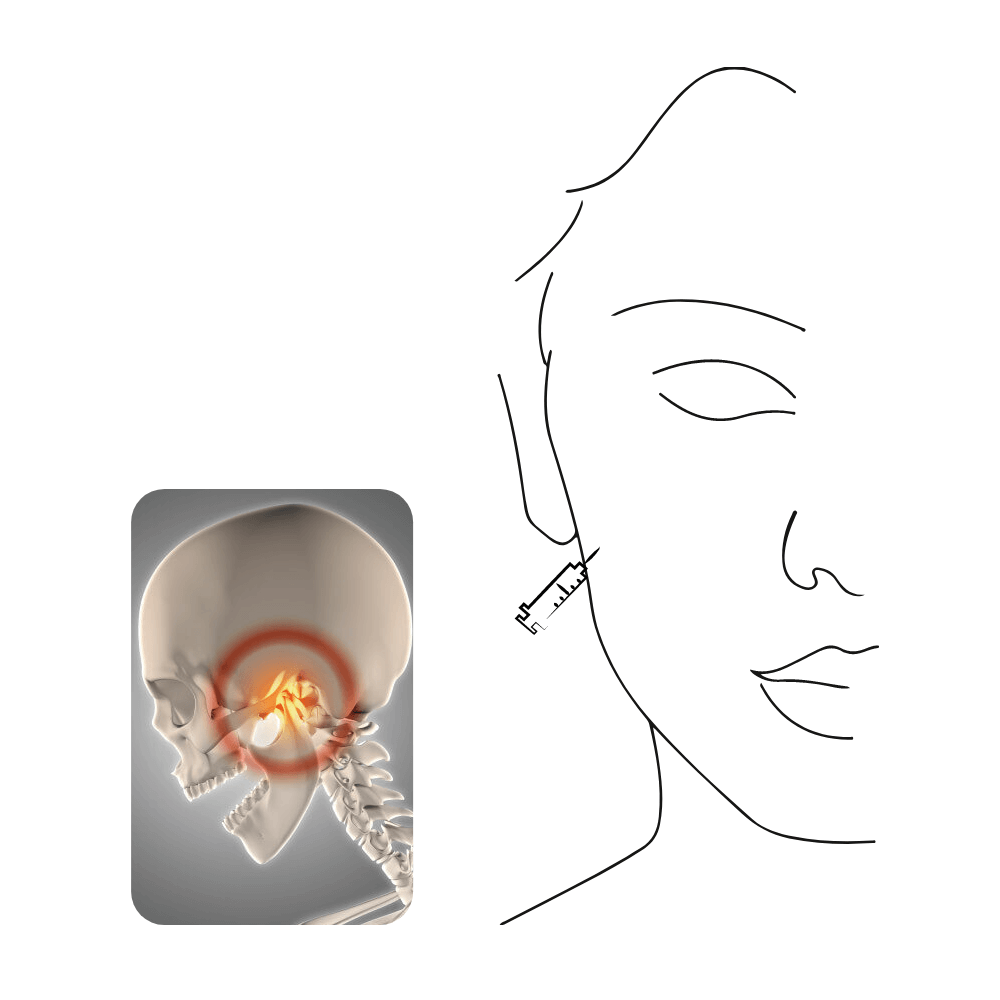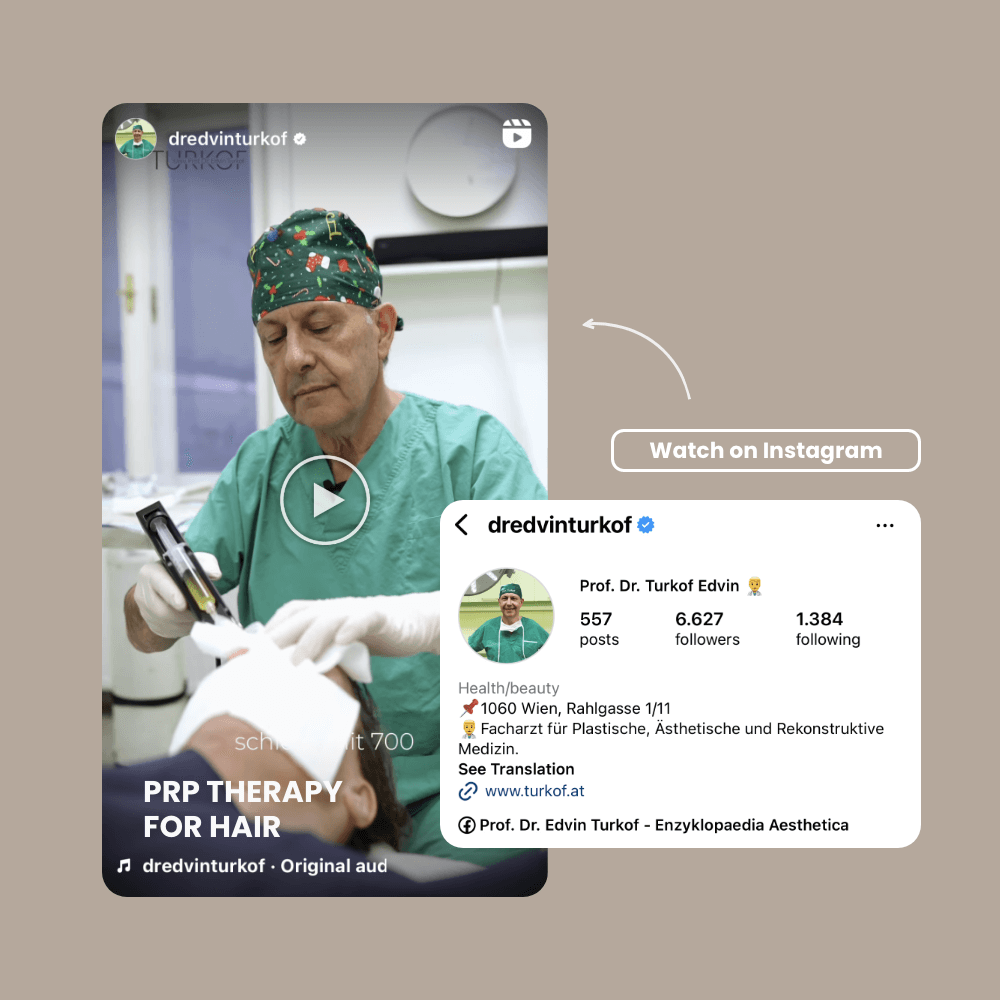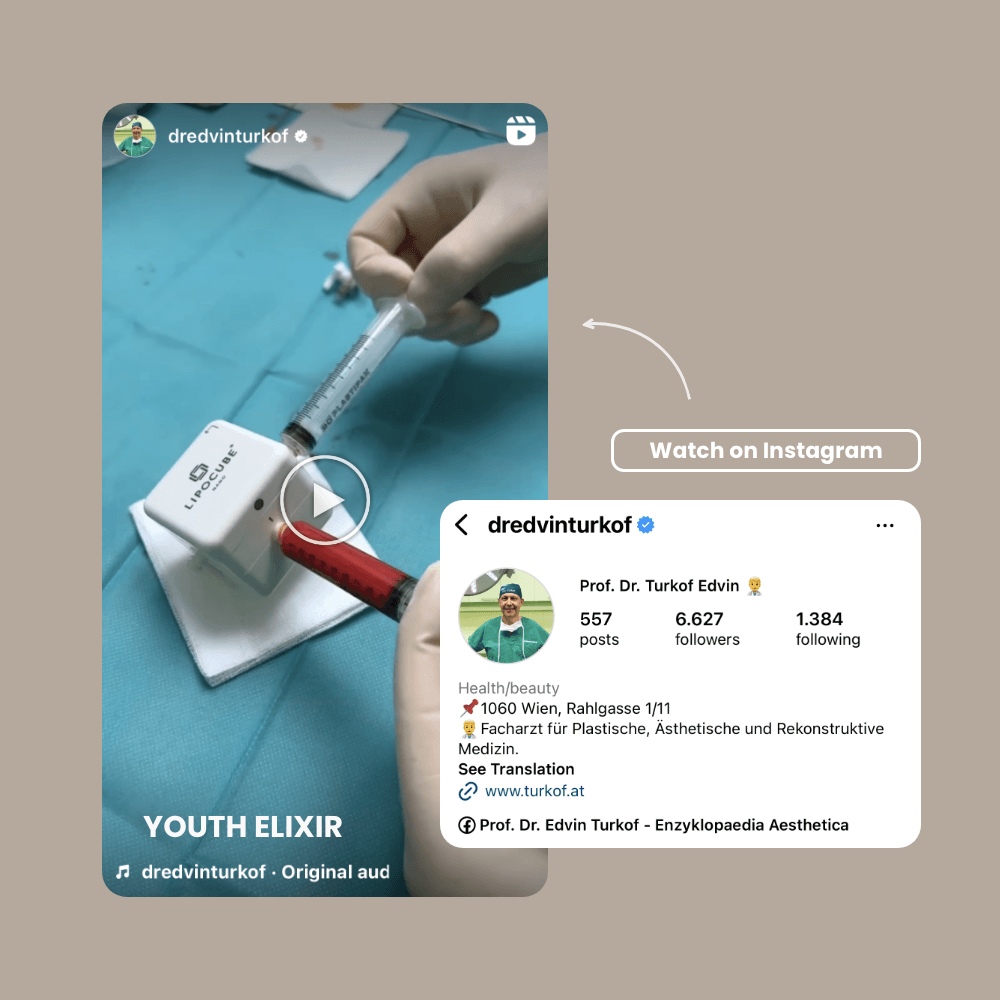Nanofat: what exactly is it, and why is it called that?
The term nanofat (English) or Nanofett (German) is, strictly speaking, a misleading label for fat-derived stem cells. The use of nanofat refers to the introduction of stem cells extracted from a person’s own fat (known as “adipose-derived stem cells”) into the body.
Thus, nanofat contains no intact fat cells, which means it is not a filler and cannot be used to correct volume deficits (e.g., under-eye circles, lips, nasolabial folds, etc.). Nanofat is therefore not a new form of fat grafting. Rather, it is a relatively new tool in aesthetic and regenerative medicine—with vast potential and powerful future applications.
The reason the term nanofat has become established in both medical literature and clinical language is because it was coined in the first publication on the topic in 2013 by two well-known plastic surgeons from Belgium, Patrick Tonnard and Alexis Verpaele.
While the term is not entirely illogical, it remains somewhat confusing—since no fat is actually used or implanted. The term derives from the method of processing the harvested fat. The fat, obtained via gentle liposuction, is mechanically emulsified—repeatedly pushed back and forth through a very small metal opening. This breaks the fat down into fragments, essentially destroying nearly all fat cells until only a liquefied, emulsified form remains.
As the fat cells are destroyed, the fragments become progressively smaller, which is why the authors adopted the term “nano”—the final stage of miniaturization after macro, milli, and micro.
Subsequently, a filtration system separates the destroyed fat from the remaining tissue. The result is a concentrated substance primarily composed of mesenchymal stem cells, which are small enough to pass through the filter. These are then used for the intended therapeutic purpose.
In summary:
Nanofat contains no intact fat cells.
Nanofat equals fat-derived stem cells.
It offers a wide range of applications in regenerative and aesthetic medicine.
Mode of action of nanofat
The discovery that stem cells are present between fat cells—that is, in the connective tissue of fat cells (known as the stromal vascular fraction)—was made in 2001 by American researcher Patricia Zuk. In fatty tissue, especially subcutaneous fat, stem cells are found in relatively high concentrations (1–10%), compared to the much lower concentration in bone marrow (0.1–0.5%).
The mode of action of nanofat is based on the ability of fat-derived stem cells to regenerate and repair tissue. Stem cells are precursor cells or progenitor cells that have the potential to differentiate into various cell types and to heal damaged tissue or replace destroyed cells.
When stem cells are introduced into fat, they convert into fat cells; when introduced into another environment, they can adapt to the cell type of the recipient tissue (e.g., hair, muscle, nails, skin, etc.). This applies to many—but not all—cell types: they are pluripotent, but not omnipotent.
Harvesting and production of nanofat
The first step in nanofat treatment is to extract a relatively small amount of fat tissue (usually 30–50 ml, maximum 100 ml) from the patient. This is typically done under local anesthesia using a special liposuction technique with particularly fine cannulas at a body site with sufficient subcutaneous fat, such as the abdomen or thighs.
- The harvested fat tissue is mechanically processed to break down the fat cells and release the stem cells from the connective tissue matrix. This process usually involves pushing the fat through a filtration system that destroys the fat tissue but keeps the stem cells intact. This process is called emulsification or micronization.
- Filtration: After the fat cells have been destroyed, the liquid is pressed through one or two filters, leaving primarily the stem cells.
IMPORTANT: Until relatively recently, stem cells could only be produced in a certified and validated cleanroom laboratory. In such a lab, the fat cells were enzymatically dissolved in a process lasting several hours, and the stem cells were collected and concentrated. However, stem cells produced in the lab could not legally be reintroduced into the body without further approval due to medical regulations.
Only since around 2010 have devices and instruments become available that allow stem cells to be separated from fat cells without using a lab—this is done through mechanical destruction and filtration. This is the main reason why nanofat has only been used in regenerative and aesthetic medicine for about a decade (since 2011), and more widely only in the past five years, even though its existence has been known for over 20 years: thanks to the enormous simplification of the process in a closed system, practically any physician can now produce and apply nanofat in their own practice.
Depending on where the nanofat is to be injected, the resulting emulsion is transferred into syringes of various sizes, and—depending on the area of application—different sized needles or cannulas are attached to the syringe.
For example, if nanofat is to be injected into a knee joint (for cartilage regeneration), a 10 ml syringe with a long, blunt cannula that doesn’t need to be very fine is used.
In contrast, for injecting stem cells into the scalp (for hair growth), only 1 ml syringes with very thin and short needles are needed.
Applications of nanofat – Overview
Nanofat is used by numerous medical specialties for both regenerative and aesthetic purposes, with the aesthetic effect generally understood as a result of the regenerative properties of the stem cells.
- Dermatology
- Aesthetic surgery
- Orthopedics
- Maxillofacial surgery
- General surgery
- Gynecology
- Urology / Andrology

Applications of nanofat in dermatology
The stem cells in nanofat have the ability to differentiate into various cell types, including skin cells such as fibroblasts, which produce collagen, and endothelial cells, which support blood vessels. Through this differentiation, the stem cells help to tighten the skin, reduce fine lines and wrinkles, and improve the overall skin texture.
In addition, the regenerative cells in nanofat contain growth factors and cytokines that support tissue healing and regeneration. Cytokines improve blood circulation, stimulate collagen production, and aid in the repair of damaged tissue.
The mode of action of nanofat is based on the synergistic effect of stem cells, regenerative cells, and growth factors. By precisely injecting nanofat into the skin, these cellular components can unfold their regenerative potential and naturally rejuvenate and restore the tissue.
There are two approaches to improving the skin’s appearance and regenerating the connective tissue beneath it using nanofat: subcutaneous (beneath the skin) application and intradermal (into the skin) application.
SUBCUTANEOUS:
To inject nanofat beneath the skin, fine injection needles or microcannulas are used. The practitioner injects the nanofat sharply under the skin in the desired areas, such as the face, neck, or hands. There, the released stem cells become active and begin to regenerate the surrounding tissue.
INTRADERMAL:
To apply nanofat into the skin, it is filled into a syringe and manually dripped onto the skin surface. It is then simultaneously stamped into the skin using extremely fine needles. This is done with a small handheld device (skin pen or derma pen) that has a motorized head with 20 ultrafine, gold-coated needles that rapidly puncture the skin, delivering the applied nanofat into the microchannels.
This process is essentially a stem cell mesotherapy with a dual function:
• delivery of stem cells
• simultaneous collagen stimulation through microneedling.
Improving skin quality in acne and sun damage
Nanofat can also be used to improve skin quality and treat skin issues such as acne scars, sun damage, or uneven skin tone. It can help smooth and enhance the appearance of the skin. The regenerative properties of nanofat can improve skin health and reduce the effects of sun damage.
Treatment of burns, skin defects, and chronic wounds
Nanofat can be used to treat burns, skin defects, and chronic wounds. Its regenerative properties can accelerate healing, promote tissue regeneration, and reduce the formation of hypertrophic scars.
Treatment of acne and other scars
Injecting nanofat into scar tissue can improve both atrophic (sunken) and hypertrophic (raised) scars. The stem cells and growth factors it contains support tissue regeneration, reduce scarring, and enhance the appearance of the affected area.
Treatment of pigmentation disorders such as melasma, sunspots, or post-inflammatory hyperpigmentation
Nanofat promotes cellular renewal and can help achieve a more even skin tone.
Applications of Nanofat in Aesthetic Medicine
Below is an overview of nanofat applications in aesthetic medicine:
Skin rejuvenation and wrinkle reduction
Nanofat can be used to treat fine lines, wrinkles, and scars. It is injected into and beneath the skin to regenerate tissue, stimulate collagen production, and improve the skin’s appearance.
Facial rejuvenation
Nanofat can improve skin quality and texture, and reduce fine lines and wrinkles in the face.
Dark under-eye circles (non-sunken)
Nanofat can reduce the appearance of dark circles under the eyes by brightening the skin and improving elasticity.
For sunken under-eye areas, classic fat grafting (for volume) is the preferred treatment.

Applications of Nanofat for Promoting Hair Growth
In the treatment of hair loss, nanofat can be injected into the scalp to stimulate hair growth. The bioactive components of nanofat support the regeneration of hair follicles and can lead to thickening and strengthening of existing hair. It has been shown that nanofat is significantly more effective than PRP (platelets) — especially in cases of androgenetic alopecia. Nanofat is injected into the scalp no more than twice a year; in most cases, one treatment per year is sufficient to maintain the effect. In treating hair loss in postmenopausal women, nanofat has proven particularly effective and is clearly superior to PRP treatment in this context as well.
NOTE: It is important to keep in mind that regenerative medicine alone is not sufficient to promote hair growth. In order to regenerate hair follicles that have been damaged and miniaturized due to genetic predisposition, additional circulation-enhancing (Minoxidil and Botox) and anti-androgenic (Finasteride, Dutasteride) treatments must be used. Further details can be found in the chapter “Promoting Hair Growth Without Surgery.”
Applications of nanofat in orthopedics
Mesenchymal stem cells can also differentiate into cartilage tissue. Their regenerative potential in orthopedics has long been recognized. They are used to treat joint diseases such as arthritis or injuries. Nanofat can promote joint regeneration, reduce inflammation, and relieve pain—even in cases of chronic or acute inflammation of tendons and joints. Most commonly, nanofat is used in orthopedics to treat osteoarthritis, where it is injected directly into the damaged joint.
Bone regeneration: In cases of bone injuries or defects, nanofat is used to support bone regeneration. Studies have shown that nanofat stimulates the formation of new bone cells.
Applications of Nanofat in Oral and Maxillofacial Surgery
Nanofat supports bone growth, particularly in older patients where bone grafts are required to create a suitable matrix for implants. It is also used to treat chronically inflamed gums and periodontitis.
Applications of Nanofat in Wound Healing Disorders
In cases of chronic wound healing disorders caused by circulatory issues (e.g. diabetes, vascular occlusions in smokers), nanofat has proven to be an effective solution and has often helped close persistent wounds. These treatments must be performed at short intervals (every few days).
Applications of Nanofat in Gynecology (Sexual Rejuvenation)
After menopause, many women suffer from vaginal dryness and general genital atrophy. Nanofat has proven its regenerative potential in this sensitive area, helping many women regain a comfortable and satisfying sex life. For women experiencing vaginal dryness, nanofat can help moisturize the mucosa and restore natural lubrication. The injected stem cells are believed to stimulate the tissue and promote the production of natural lubricants.
Vulva Rejuvenation
Nanofat can be used to improve the quality of the skin in the vulvar region. Injection into the vulva enhances skin structure, elasticity, and overall aesthetic appearance.
Stress Incontinence
Stress incontinence is the involuntary loss of urine during physical strain or exertion. Nanofat may help strengthen the surrounding tissue and reduce symptoms.
Scar Treatment
After gynecological procedures such as C-sections or episiotomies, unsightly, enlarged, or thickened scars may form. Nanofat can be used to improve the appearance and elasticity of these scars. Injection into the scar area can revitalize the surrounding tissue and support healing.
Applications of Nanofat in Urology/Andrology (Sexual Rejuvenation)
There are already reports indicating positive effects of nanofat treatment in addressing erectile dysfunction.
Summary / Note
Informed readers may notice that the application spectrum of nanofat is very similar — almost identical — to that of PRP (platelet-rich plasma). This is indeed correct. The two methods overlap in almost every area. However, nanofat has been shown to be significantly more effective than PRP, both in skin-tightening procedures and in stimulating hair growth. On the other hand, nanofat treatment is considerably more complex and more expensive.
The best results have been observed in combination therapy: 20% PRP is mixed into the nanofat, and following the treatment, additional PRP sessions can be performed 3–5 times at monthly intervals. This is currently considered the most optimal form of regenerative medicine.


